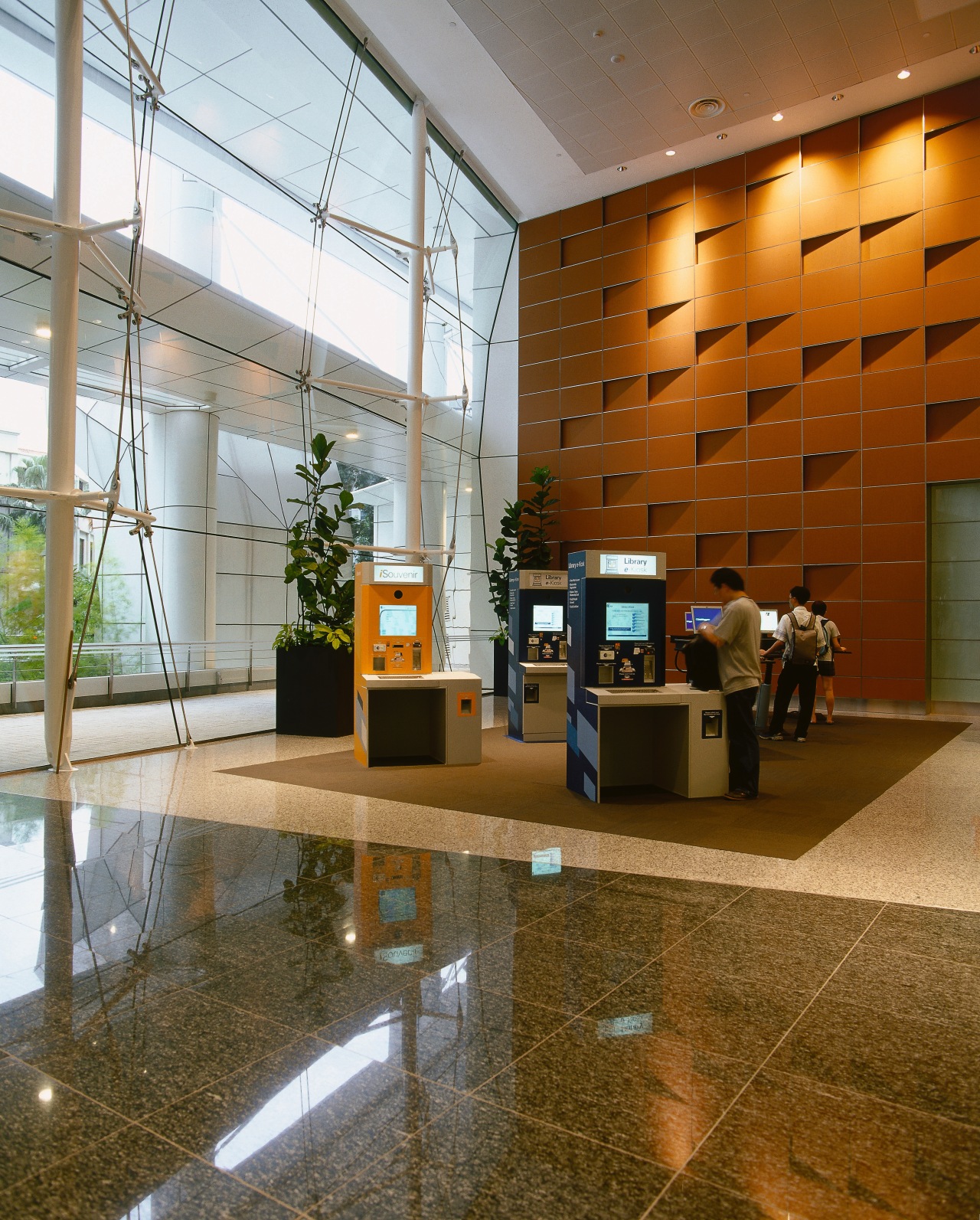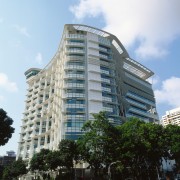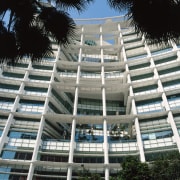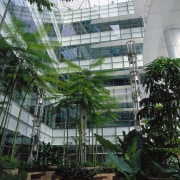Environmental integration
Singapore's new National Library is an exercise in ecodesign the built environment working as a system within the natural environment
In ecological terms, many of today's buildings are a high concentration of non-renewable resources, with subsequent operations bearing further consequences on the natural environment. So when a new national library was required to meet the growing information and research needs of Singaporeans, the government needed to look for ways to minimise environmental impact by designing with nature.
TR Hamzah & Yeang International won the competition to design Singapore's National Library based on their environmentally responsible design. The 16-storey glass and steel structure was awarded the first Green Mark Platinum Award by the Building and Construction Authority of Singapore, the highest mark for a green and sustainable building. Rajiv Ratnarajah, project architect, was involved throughout the process.
"There is certainly a connection between architecture and ecological design," Ratnarajah says. "The library is a major public space, which also gives back to the community by improving the human environment, as well as protecting the natural."
Of the many ecologically responsive features, Ratnarajah says the exterior environment has a beneficial effect on the ecology of the interior.
"We used 75 percent glazing to create a very transparent building. Rather than tinting the windows to protect from excessive glare, sunshades and louvres were installed for their ecological benefits and tropical aesthetic," he says.
Optimising the use of daylight ensures enough natural light penetrates into the building for patrons to read and work by. It also reduces energy consumption, as lighting zones operate to switch off when there is sufficient daylight.
Ratnarajah says this transparency also provides a better visual and physical relationship between the inside and the outside, extending the experience of the complex to pedestrians walking around the perimeter, and to the city beyond.
While a transparent facade was important, the architects also had to consider ways to control cooling loads by blocking out the sultry afternoon sun. Ratnarajah says the orientation, massing and careful articulation of the external facade were therefore very important.
"As the library is situated on an island site, we had to orientate the building to block out the hot western sun, as well as allowing for as much daylight to enter the building from the east in the morning as possible. This is one of the reasons why the building consists of two blocks," he says.
Another reason is natural ventilation. To reduce the energy consumption of the building, Ratnarajah says one block was designed asymmetrically the purpose of its curvature being to funnel the predominately north-to-south wind between the two blocks and into the open plaza.
"The plaza is based on the ground plane below a 615-seat suspended theatre. This theatre had to be relatively cooler than the rest of the building for the patrons' comfort, which the horizontal wind plane achieves without mechanical assistance."
The open-to-the-sky civic plaza draws the hot air out vertically, as well as acoustically, separating the entertainment plaza from the main rectangular block, which houses the various National Library collections.
Ratnarajah says these are examples of low energy design strategies, which include passive, active, and mixed design modes. The passive mode is designed for improved comfort conditions, without the use of any electromechanical systems. Most of the library workspaces and collection areas operate in the active mode, using full air conditioning to protect rare books and artefacts from the detrimental effects of humidity.
Into this blend of the active and passive, a third strategy mixed mode is adopted, where natural ventilation is supplemented by mechanical means, such as fans in lobbies, foyers, courtyards and other transition spaces.
The central lending library is located in the basement, with vertical circulation by lifts and escalators accessing the first bridged entrance to the National Library on level seven. Various collections are housed on ascending levels, with a triple-height space on level 11 providing strong visual impact.
These vertical and horizontal links extend to the design of the interiors. Paul Scanlan, of Woodhead Wilson, says the design is centred around the idea of connections.
"The design philosophy evolved from the idea of various elements of the building being connected to each other," he says. "This extends to the connection of the library to the community as a whole, and the connection of the National Library and Singapore to the world."
This is encapsulated in the seven-storey book wall that runs through the core of the building. The book wall is constructed from aluminium and glass, and acts as a division between front and back of house.
Scanlan says other elements of the interior design include multi-coloured LED lighting, and a rare books library, which was designed to meet the requirements of keeping the area dark and cool with low humidity.
For expansive areas, Scanlan aligned with Yeang's ecological considerations for design. The choice of flooring for a public facility with high foot traffic was crucial. Completely recyclable carpet was therefore chosen to minimise resource consumption, as well as reducing the waste contributions to the environment.
Low-VOC paints were used throughout the complex. Volatile Organic Compounds which evaporate into the air and are harmful for the health of the occupants, as well as to the environment have a major negative impact on the healthfulness of a building.
Integrating vegetation and water elements into the building provided aesthetic and energy saving benefits. Fourteen gardens ranging from 300- to 1500m² in size were installed at varying intervals throughout the building to extend the tropical feel, as well as providing a thermal buffer.
"Incorporating vegetation onto the roofs and facades reduces the overall heating effect of the building. The tropical plants also reduce the energy consumption of the locality up to 10 percent, by cooling the facade in summer and providing insulation," the architect says.
Ratnarajah says that over 6,300m² is designated as green space throughout the library, with the benefits extending beyond good ecological design.
"We aimed to create urban sky courts that provide a positive psychological effect on building users, and improve general working environments," he says.
Credit list
Location
Project manager
Quantity surveyor
Project architect
Project mechanical and electrical engineer
Design architect
Engineer
Builder
Project civil and structural engineer
Story by: Trendsideas
Home kitchen bathroom commercial design
















